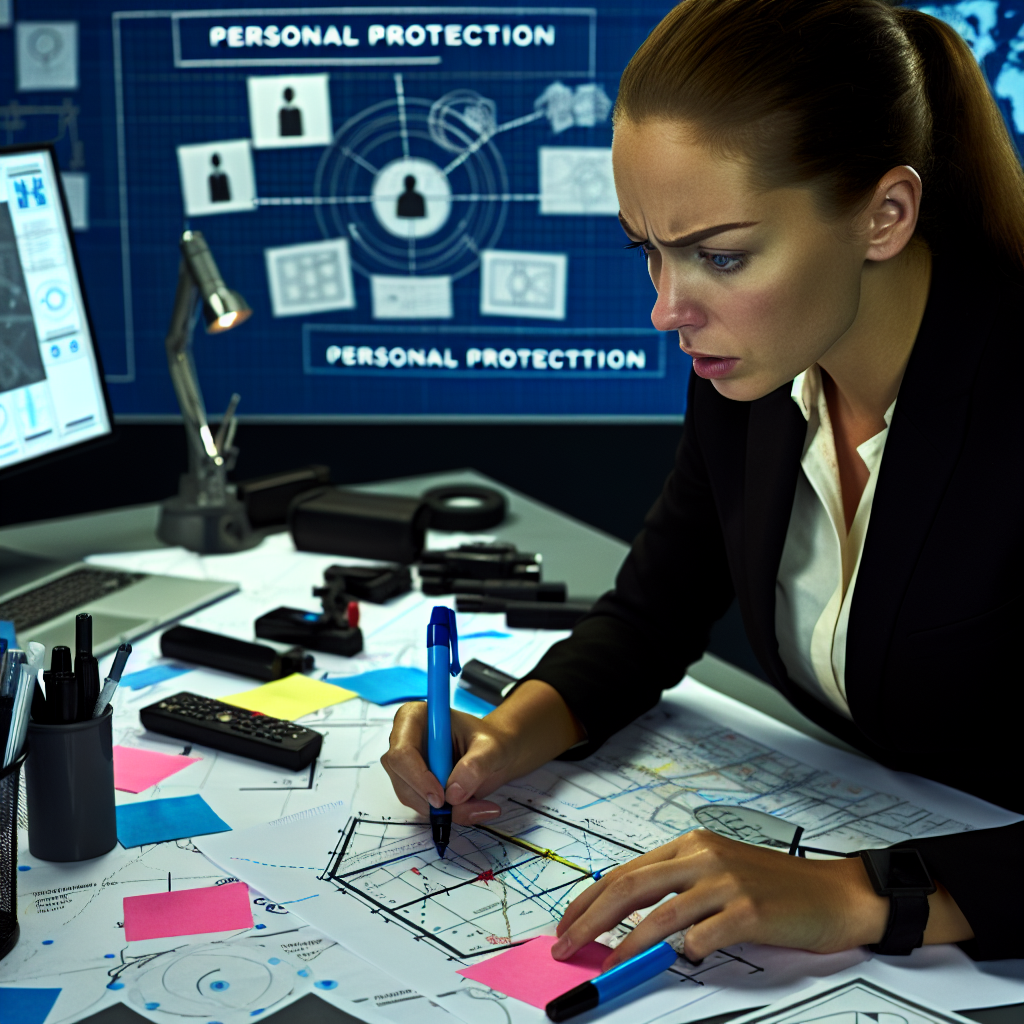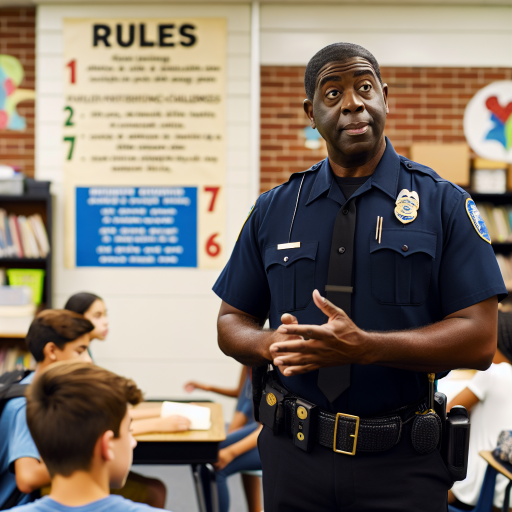Importance of Having a Personal Protection Plan
Creating a personal protection plan helps you proactively address potential risks and dangers.
Statistics on Crime Rates and the Need for Personal Safety Measures
According to recent studies, crime rates have been on the rise, highlighting the importance of personal safety measures.
Personal Anecdotes to Illustrate the Need for a Protection Plan
I remember a friend who was attacked while walking alone at night, emphasizing the need for personal protection.
Another acquaintance had their home broken into, underscoring the importance of securing your living space.
By developing a personal protection plan, you can safeguard yourself from potential threats and mitigate risks effectively.
When it comes to developing a personal protection plan, the first step is to assess your current risks and vulnerabilities.
Take inventory of your surroundings, both at home and in public, to identify any potential threats.
Consider the people you interact with regularly and assess if any of them pose a risk to your safety.
Next, it’s important to evaluate your daily routines and activities to determine where you may be at risk.
Think about the routes you take to work, school, or other frequently visited places and identify any potential dangers.
Assess your habits, such as posting your location on social media, that may inadvertently make you a target.
It’s also crucial to reflect on past experiences or instances of danger that could inform your protection plan.
Consider any previous encounters with threatening individuals or situations and use that knowledge to enhance your security measures.
Reflect on any near misses or close calls to understand where you may have been vulnerable and how to prevent similar situations in the future.
Effective personal protection plans are comprehensive and tailored to individual needs and circumstances.
Determine what level of security is appropriate for your lifestyle and adjust your plan accordingly.
Seek input from professionals, such as security experts or self-defense instructors, to ensure your plan is well-rounded.
Remember, creating a personal protection plan is an ongoing process that should be regularly reviewed and updated.
Stay informed about current threats and adjust your plan as needed to address any new risks.
Practice situational awareness and trust your instincts to stay safe in any situation.
Transform Your Career Today
Unlock a personalized career strategy that drives real results. Get tailored advice and a roadmap designed just for you.
Start NowBy following these steps and staying proactive, you can develop a personal protection plan that provides peace of mind and enhances your safety.
Personal Protection Plan Development
When developing a personal protection plan, it is essential to set clear goals to guide your efforts.
One of the first steps in creating your plan is determining what you want to achieve from it.
- Increased safety
- Peace of mind
- Empowerment
Establish Specific Objectives
To ensure the effectiveness of your plan, it is crucial to establish specific objectives and outcomes.
- Identify potential threats
- Assess current security measures
- Implement new security protocols
Measure Effectiveness
By setting clear objectives, you can measure the effectiveness of your personal protection plan.
- Regularly review progress
- Adjust strategies as needed
- Seek feedback from trusted sources
Prioritize Based on Threat Level
It is important to prioritize your goals based on the level of threat and urgency.
- Assess potential risks
- Identify vulnerabilities
- Focus on addressing high-risk areas first
By setting clear goals, establishing specific objectives, and prioritizing based on threats, you can develop a comprehensive personal protection plan that meets your needs and enhances your safety and peace of mind.
Delve into the Subject: Fish and Game Warden vs. Park Ranger
Research and Explore Different Protection Strategies and Techniques
When developing a personal protection plan, the first step is to research and explore various protection strategies and techniques that are available.
This could include learning about self-defense tactics, personal safety devices, and emergency procedures.
It’s important to have a thorough understanding of the different options available so that you can choose the best ones that suit your needs and lifestyle.
This could involve reading books, articles, and online resources, as well as attending workshops and seminars on personal protection.
Learn About Self-Defense Tactics, Personal Safety Devices, and Emergency Procedures
Self-defense tactics are essential for protecting yourself in dangerous situations.
Learning techniques such as martial arts or basic self-defense moves can give you the skills and confidence to defend yourself if needed.
Personal safety devices such as pepper spray, tasers, or alarms can also be beneficial in enhancing your personal protection plan.
These tools can provide an extra layer of security and peace of mind in case of an emergency.
Emergency procedures are crucial to know in case you find yourself in a dangerous or threatening situation.
Understanding what to do in terms of calling for help, escaping, or defending yourself can make a significant difference in ensuring your safety.
Consult with Experts or Professionals in Security and Personal Protection
Seeking advice from experts or professionals in the field of security and personal protection can provide valuable insights and recommendations for developing a personal protection plan.
These individuals have the knowledge and experience to assess your specific needs and risks, and can offer tailored advice on the best strategies and techniques to implement in your plan.
Transform Your Career Today
Unlock a personalized career strategy that drives real results. Get tailored advice and a roadmap designed just for you.
Start NowBy consulting with these experts, you can gain a better understanding of how to enhance your personal protection plan and ensure that you are well-prepared for any potential threats or dangers.
Attend Workshops, Training Sessions, or Seminars on Personal Safety
Attending workshops, training sessions, or seminars on personal safety is a practical way to learn more about how to protect yourself and stay safe in various situations.
These sessions often cover topics such as self-defense tactics, risk assessment, situational awareness, and emergency response protocols.
They provide hands-on training and knowledge that can be invaluable in developing a comprehensive personal protection plan.
By participating in these educational opportunities, you can acquire new skills, gain confidence in your ability to protect yourself, and connect with other individuals who share similar safety concerns.
This can help you build a strong support network and resources for your personal protection journey.
Discover More: Legal Authority of Campus Security Officers
Create a Tailored Plan
Tailor your plan to your individual needs.
Consider factors like your daily routine.
Your living situation is also important.
Lastly, think about your personal concerns.
Step-by-Step Guide
Create a detailed guide outlining specific actions.
Include potential threats and emergencies.
Preventive Measures
Incorporate preventive measures into your plan.
Install security systems for protection.
Carry self-defense tools when necessary.
Be aware of your surroundings at all times.
Reactive Responses
Include reactive responses in your plan.
Know how to defend yourself in an attack.
Be prepared to contact emergency services.
Transform Your Career Today
Unlock a personalized career strategy that drives real results. Get tailored advice and a roadmap designed just for you.
Start NowEscape Plans
Develop escape plans for various situations.
This includes home invasions and aggressive encounters.
Customize Based on Lifestyle
Customize your protection plan based on your lifestyle.
Ensure the plan is realistic and effective.
Start developing your plan today.
Stay prepared and protected in any situation.
Explore Further: Top Security Consulting Firms in the USA

Implement and practice your personal protection plan regularly
Consistency is key when it comes to personal protection.
Make sure to regularly review and practice your plan to ensure that you are well-prepared for any potential threats or emergencies that may arise.
Make your protection plan a habit by incorporating it into your daily routine
Integrating your protection plan into your daily activities will help you internalize the steps and procedures.
This makes it easier to remember and execute in high-pressure situations.
Rehearse emergency drills and scenarios with family members or friends
Practicing your personal protection plan with trusted individuals can help you improve your communication and coordination skills.
This makes it easier to respond effectively in a crisis.
Update and modify your plan as needed based on feedback and experience
It’s important to regularly assess and update your protection plan based on your experiences and any feedback you receive.
This will help you adapt to new threats and challenges as they arise.
By following these steps and continuously refining your personal protection plan, you can ensure that you are well-equipped to handle any potential risks or dangers that may come your way.
Remember, proactive planning is key to staying safe in an unpredictable world.
See Related Content: Emergency Response: Role of Bomb Squad Technicians
When developing a personal protection plan, seeking feedback and support from trusted individuals is crucial.
Sharing your protection plan with close friends, family members, or colleagues can provide valuable insight.
Transform Your Career Today
Unlock a personalized career strategy that drives real results. Get tailored advice and a roadmap designed just for you.
Start NowAsk for their input, suggestions, and advice on improving your plan to make it more effective.
Consider forming a support network or safety group for additional security.
Having a group of trusted individuals who are aware of your plan can offer an extra layer of protection.
Collaborate with them to brainstorm potential threats and develop strategies to address them proactively.
Regularly communicate with your support network to stay updated on any changes or updates to your plan.
Make sure everyone knows their role and responsibilities in case of an emergency or threatening situation.
Review and update your protection plan regularly to ensure it remains relevant and effective.
Attend self-defense classes or workshops to enhance your personal protection skills and knowledge.
Being physically prepared can greatly improve your ability to defend yourself in dangerous situations.
Practice situational awareness and learn how to assess and mitigate potential risks in various scenarios.
Invest in personal safety devices such as pepper spray, self-defense keychains, or personal alarms.
Having these tools readily available can provide peace of mind and added security in uncertain situations.
Stay informed about current safety trends and best practices in personal protection to stay ahead of potential threats.
Developing a Personal Protection Plan
Developing a personal protection plan is crucial for ensuring your safety in various situations.
It involves assessing potential risks and creating strategies to mitigate them.
It is important to proactively take steps to protect yourself and those around you from harm.
By having a personal protection plan in place, you can feel more empowered and prepared in times of need.
Remember, personal safety is a priority, and creating a protection plan is a proactive way to safeguard yourself from potential threats.
Don’t wait for an emergency to happen before taking action.
Take the time to evaluate your surroundings, assess potential risks, and create a plan that addresses your specific needs and concerns.
Your safety is worth the effort.
For further guidance on developing a personal protection plan, consider seeking resources such as self-defense classes, safety seminars, or consulting with security professionals.
Stay informed and stay safe!
Additional Resources
Comprehensive Safety Action Plans | US Department of Transportation
Transform Your Career Today
Unlock a personalized career strategy that drives real results. Get tailored advice and a roadmap designed just for you.
Start Now



